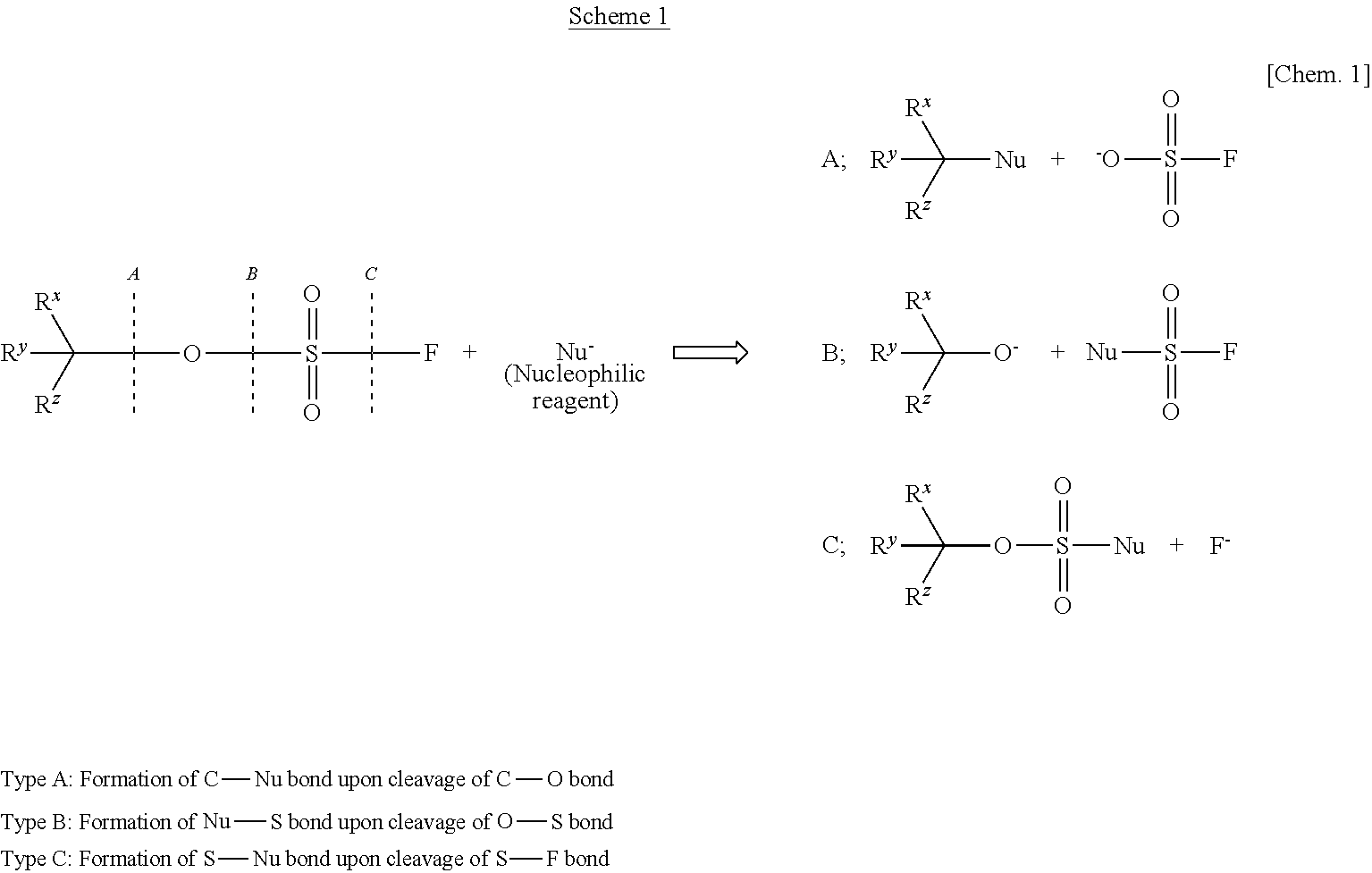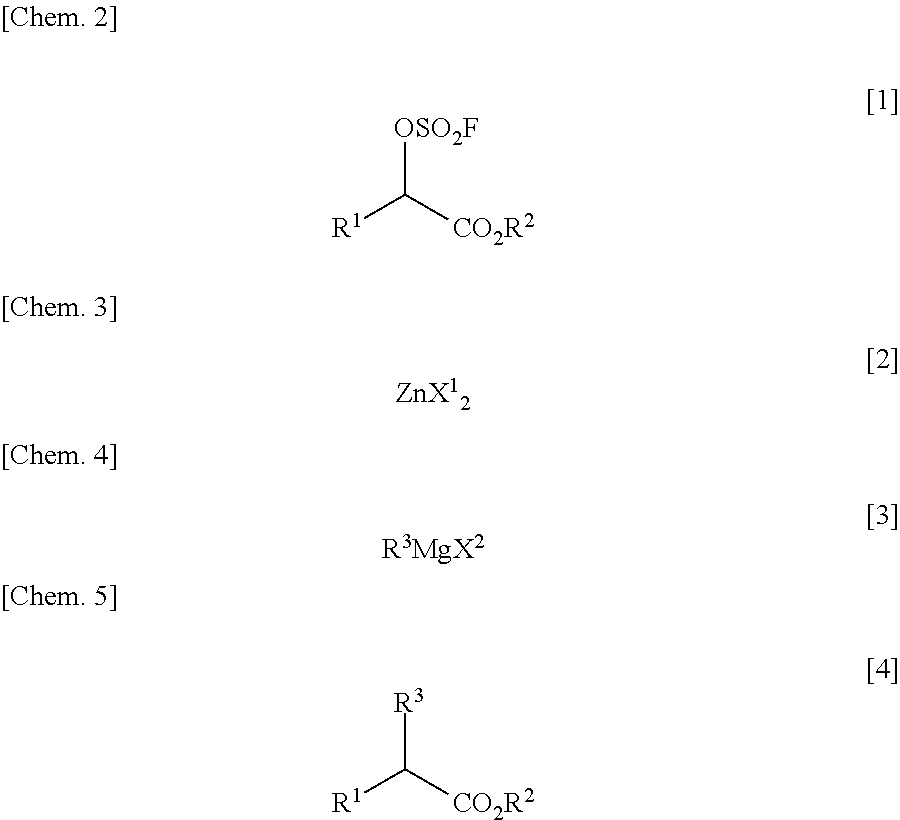Process for Producing alpha Substituted Ester
a technology of substitution reaction and ester, which is applied in the preparation of sulfuric acid esters, organic chemistry, chemistry apparatus and processes, etc., can solve the problems of affecting the production process, raising waste disposal, and almost no substitution reaction with carbon nucleophilic reagents are known
- Summary
- Abstract
- Description
- Claims
- Application Information
AI Technical Summary
Benefits of technology
Problems solved by technology
Method used
Image
Examples
example 1
[0078]To 7.5 mL (0.33M) of tetrahydrofuran, 500 mg (2.50 mmol, 1.00 eq) of fluorosulfuric acid ester of optically active α-hydroxyester of the following formula (S-configuration, optical purity: 91.5% ee):
and 0.12 mL (0.12 mmol, 0.05 eq) of 1.00M diethyl ether solution of zinc chloride (ZnCl2) were added. The resulting solution was cooled to 0° C., followed by dropping 3.50 mL (3.47 mmol, 1.39 eq) of 0.99M tetrahydrofuran solution of benzyl magnesium chloride (C6H5CH2MgCl) over 10 minutes into the solution. This reaction solution was stirred for 2 hours at 0° C. To the thus-obtained reaction terminated liquid, 20 mL of saturated aqueous ammonium chloride solution was added. The reaction terminated liquid was then extracted twice with 20 mL of n-hexane. The extracted organic layer was concentrated under a reduced pressure and subjected to vacuum drying. With this, 475 mg of a crude product of optically active α-substituted ester of the following formula (S-configuration):
was obtained...
reference example 1
[0082]Into a pressure-proof reaction vessel of stainless steel (SUS) were placed 20.00 g (169.3 mmol, 1.00 eq) of optically active alcohol of the following formula (S-configuration):
141 mL (1.20M) of toluene, 20.56 g (203.2 mmol, 1.20 eq) of triethylamine and 176.10 g of aqueous potassium carbonate solution (prepared from 35.10 g (254.0 mmol, 1.50 eq) of potassium carbonate and 141 mL (1.20M) of water). The reaction vessel was immersed in an ice cooling bath, followed by blowing 34.56 g (338.6 mmol, 2.00 eq) of sulfuryl fluoride from a cylinder into the reaction vessel. This reaction solution was stirred for 3 hours and 30 minutes under ice cooling conditions. It was confirmed by gas chromatography of the thus-obtained reaction terminated liquid (organic layer) that the conversion rate was 96%. At the time of measurement of the conversion rate, the gas chromatographic purity of optically active fluorosulfuric acid ester of the following formula (S-configuration):
was 82.9%; and the g...
PUM
| Property | Measurement | Unit |
|---|---|---|
| optical purity | aaaaa | aaaaa |
| optical purity | aaaaa | aaaaa |
| optical purity | aaaaa | aaaaa |
Abstract
Description
Claims
Application Information
 Login to View More
Login to View More - R&D
- Intellectual Property
- Life Sciences
- Materials
- Tech Scout
- Unparalleled Data Quality
- Higher Quality Content
- 60% Fewer Hallucinations
Browse by: Latest US Patents, China's latest patents, Technical Efficacy Thesaurus, Application Domain, Technology Topic, Popular Technical Reports.
© 2025 PatSnap. All rights reserved.Legal|Privacy policy|Modern Slavery Act Transparency Statement|Sitemap|About US| Contact US: help@patsnap.com



